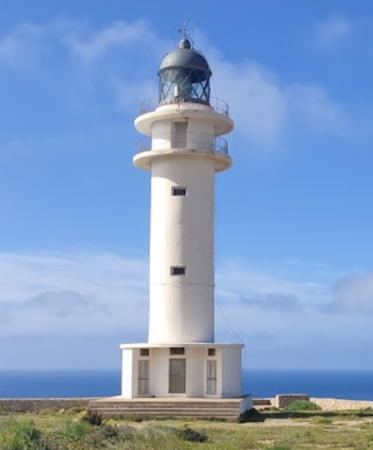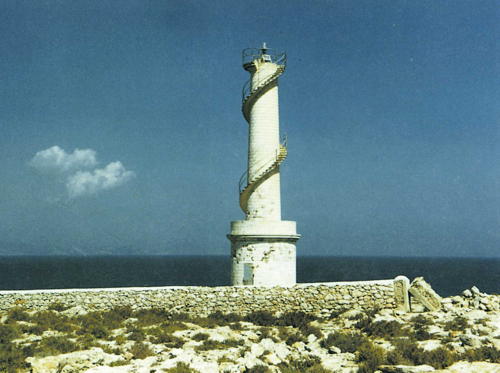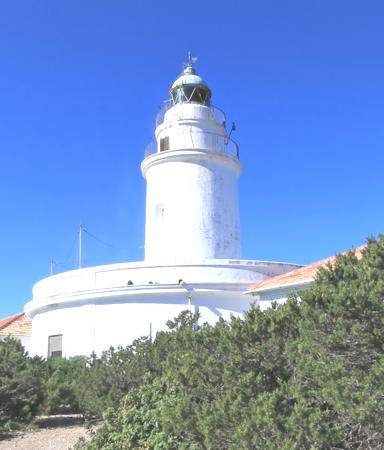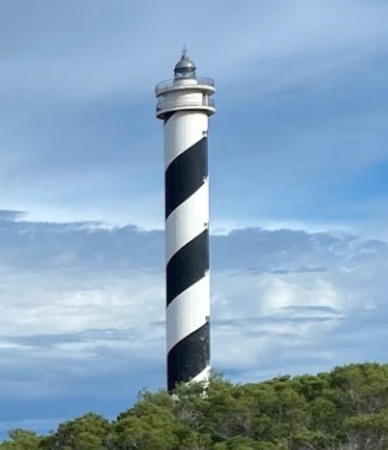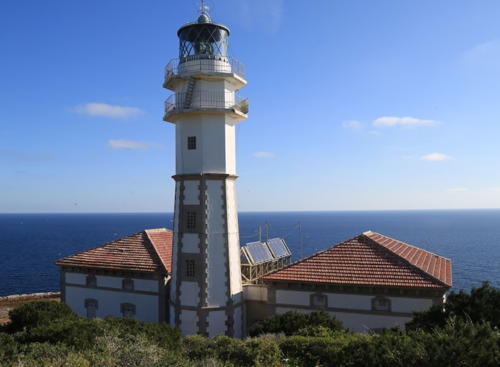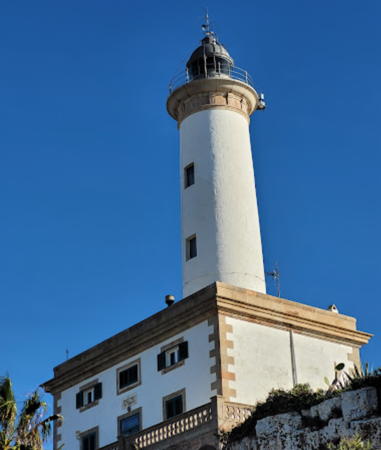The Kingdom of Spain occupies nearly 85% of the Iberian Peninsula in southeastern Europe with coastlines facing south and southeast on the Mediterranean Sea and northwest on the Atlantic Ocean. Spain also includes the Balearic Islands in the Mediterranean, the Canary Islands in the Atlantic, and the cities of Ceuta and Melilla on the north coast of Morocco.
The Balearic Islands are an archipelago in the Mediterranean off the east coast of Spain. Mallorca (Majorca) is by far the largest of the islands; the other principal islands are Menorca (Minorca) to the northeast and Ibiza (Eivissa) and Formentera to the southwest. The islands were conquered by the Kingdom of Aragon in the 13th century and have been part of Spain for several centuries. The Catalan language is spoken and the islands are known officially by their Catalan name, Illes Balears. In the 20th century the Balearics became very popular resort destinations.
This page includes lighthouses of Ibiza, Formentera and nearby islets; this group is sometimes called the Pityusic Islands (from the Greek for Pine Islands).
In Catalan the word for a lighthouse is far, balisa is a beacon, illa is an island, cap is a cape, punt is a promontory or point of land, roca is a rock, escull is a reef, badia is a bay, ria is an estuary or inlet, estret is a strait, riu is a river, and port is a port or harbor. The word for a lighthouse is faro in Spanish but its use is generally restricted to the larger coastal light stations. Smaller lighthouses are called balizas (beacons). In Spanish isla is an island, cabo is a cape, punta is a promontory or point of land, péñon is a rock, arrecife is a reef, bahía is a bay, ría is an estuary or inlet, estrecho is a strait, río is a river, and puerto is a port or harbor.
Navigational lights in Spain are the responsibility of the national port authority, Puertos del Estado, but many of them are operated and maintained by regional port authorities. The Balearics have their own port authority, the Autoritat Portuària de Balears. The Comisión de Faros, founded in 1842 to build and maintain Spanish lighthouses, is now an advisory panel.
ARLHS numbers are from the ARLHS World List of Lights. ES numbers are from the Spanish national list of lights, Libro de Faros. Admiralty numbers are from volume E of the Admiralty List of Lights & Fog Signals. U.S. NGA List numbers are from Publication 113.
- General Sources
- Libro de Faros y Señales de Niebla
- Online edition of the official Spanish light list.
- Fars de Balears (Balearic Lighthouses)
- An outstanding and comprehensive web site posted by the port authority, with versions in English as well as Spanish and Catalan.
- Online List of Lights - Islas Baleares
- Photos by various photographers posted by Alexander Trabas. Most of the photos for this area are by Peter Doll or Rainer Arndt.
- Faros de las Islas Baleares
- Photos by Laure Chappuis posted by Alain Guyomard and Robert Carceller on their web site, Le phare à travers le monde.
- Lighthouses in Balearic Islands
- Photos by various photographers available from Wikimedia.
- World of Lighthouses - Non-continental Spain
- Photos by various photographers available from Lightphotos.net.
- Spain Lighthouses
- Aerial photos posted by Marinas.com.
- Leuchttürme Spaniens auf historischen Postkarten
- Historic postcard images posted by Klaus Huelse.
- GPSNauticalCharts
- Navigational chart information for the islands.
- Navionics Charts
- Navigational chart for the islands.
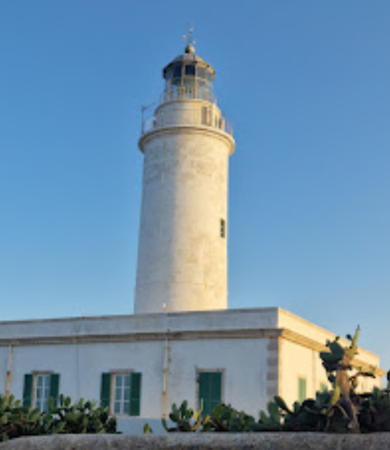
Sa Mola Light, Formentera, May 2022
Google Maps photo by Andrés Frontera
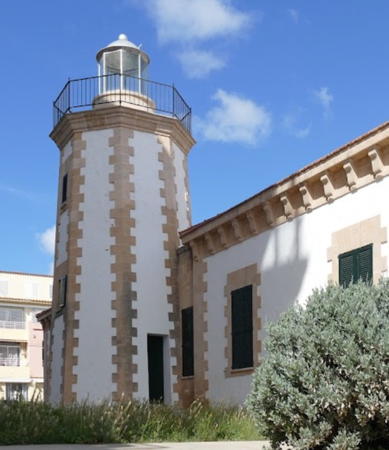
Coves Blanques Light, Sant Antoni de Portmany, April 2022
Google Maps photo by Julio Manuel Merino
